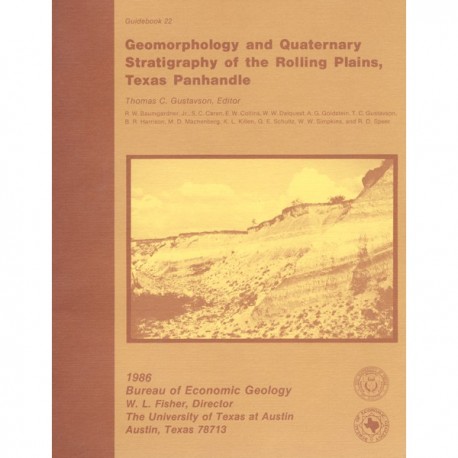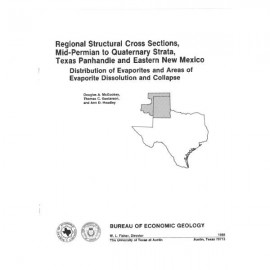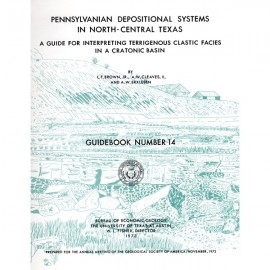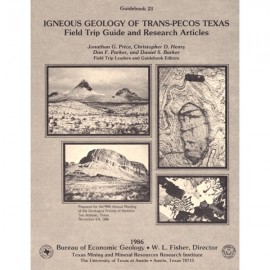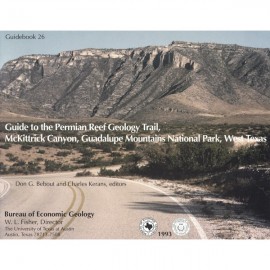Guidebooks
-
Books & Reports
- Reports of Investigations
- Guidebooks
- Udden Series
- Geological Circulars
- Down To Earth
- Atlases of Major Oil and Gas Reservoirs
- Texas Memorial Museum Publications
- Environmental Geologic Atlas of the Texas Coastal Zone
- Mineral Resource Circulars
- Other Reports
- Seminars and Workshops
- Handbooks
- Submerged Lands of Texas
- Symposia
- Annual Reports
- Open File Reports
-
Maps & Cross Sections
- Thematic Maps
- Miscellaneous Maps, Charts & Sections
- Geologic Atlas of Texas
- STATEMAP Project Maps
- Geologic Quadrangle Maps
- Cross Sections
- Highway Geology Map
- Energy and Mineral Resource Maps
- Shoreline Change and Other Posters
- Wilcox Group, East Texas, Geological / Hydrological Folios
- Bouguer Gravity Atlas of Texas
- River Basin Regional Studies
- Featured Maps
- Posters
- Teachers & the Public
-
Geological Society Publications
- Gulf Coast Association of Geological Societies
- Alabama Geological Society
- Austin Geological Society
- Corpus Christi Geological Society
- Houston Geological Society
- Lafayette Geological Society
- Mississippi Geological Society
- New Orleans Geological Society
- South Texas Geological Society
- GCS SEPM Publications
- Historic BEG & UT Series
Geomorphology and Quaternary Stratigraphy of the Rolling Plains, Texas Panhandle
GB0022
Geomorphology and Quaternary Stratigraphy of the Rolling Plains, Texas Panhandle. T. C. Gustavson, editor. 97 p., 48 figs., 6 tables, 1 appendix, 1986. ISSN: 0363-4132. Print
"This field guide summarizes recent interpretations of geomorphic processes and Quaternary stratigraphy in parts of the Rolling Plains and Southern High Plains of the Texas Panhandle. Field stops, primarily in Hall and Briscoe Counties, were selected as examples of geologic phenomena that are widespread in the Texas Panhandle. Particular attention is paid to the dissolution of evaporites, primarily salt, and collapse of overlying strata as processes that have significantly affected landscape development and Quaternary stratigraphy in this area (Stops 1 through 4, 6, 7, 11, 14, and 16). The stratigraphy, depositional environments, paleontology, archeology, and paleoclimatic history of a newly recognized, unnamed Quaternary formation are presented (Stops 10 through 15). The deposition and incision of unpaired terraces along the Little Red River are described, as are recent hillslope erosion rates and certain effects of eolian processes (Stops 5, 8, and 9). Archeological resources of the Lake Mackenzie area (Stop 17) and vertebrate remains from the Tule Formation (Stop 18) are also described."
Citation:
Gustavson, T. C., editor, 1986, Geomorphology and Quaternary Stratigraphy of the Rolling Plains, Texas Panhandle: The University of Texas at Austin Bureau of Economic Geology, Guidebook 22, 97 p.
